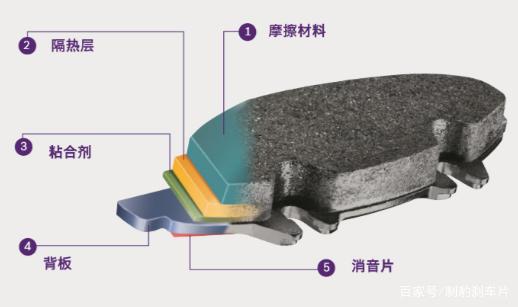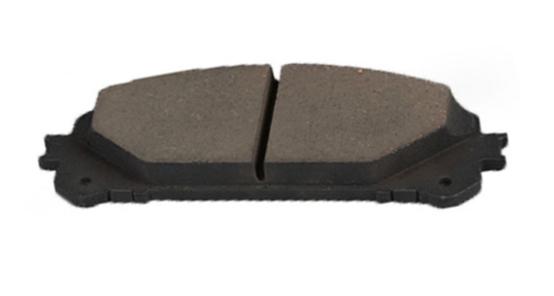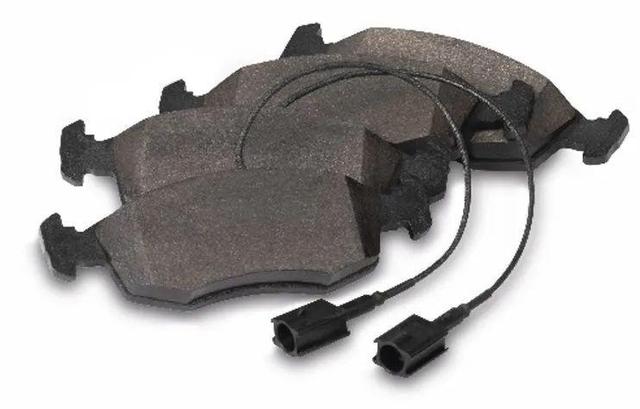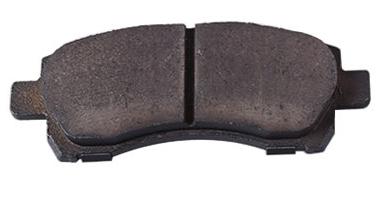The usual replacement mileage of brake pads is 30,000 to 40,000 kilometers, but there are many who still have a margin for the brake pads after running more than 60,000 kilometers, and there are also people who have worn the brake pads to the limit after only 30,000 to 40,000 kilometers. Why is the life of brake pads so different?
There are many reasons that affect the life of brake pads, such as driving habits, driving conditions, and the formula of the brake pads. Among them, the formula of the brake pads has a direct effect on the life.

At present, the well-known friction materials of passenger car brake pads can be roughly divided into four categories: semi-metallic, low-metallic, NAO material, and ceramic material. The performance and advantages of each material are different, we will introduce them one by one.
Semi-metallic material

The friction material of semi-metal brake pads is a mixture of organic materials and metals, and the metal content is relatively high. High temperature heat dissipation performance is better, relatively speaking, it is easy to produce noise when braking.
low metal formula

The low-metal formula contains lower metal components than the semi-metal formula, and has less damage to the brake disc. At the same time, it can ensure the stability of heat dissipation and friction coefficient at high temperatures. The high-quality low-metal formula is often used in mid-to-high-end models.
NAO material

NAO material is non-asbestos organic friction material, containing aramid fiber and a small amount of metal material. The advantages of NAO material are short running-in period, low noise, less wear on the Brake System, less dust, and long service life.
Ceramic brake pads
Ceramic brake pads can be said to make up for the shortcomings of organic and semi-metal brake pads. Its material is mainly composed of mineral fiber, aramid fiber and ceramic fiber. On the one hand, because there is no metal material, the noise will be significantly reduced when the brake pads and brake discs are rubbed. At the same time, the damage to the brake disc during the friction process will also be significantly reduced.
Different brake pad formulas are suitable for different models, each has its own advantages, and it is not possible to simply comment on its advantages and disadvantages through the formula. The brake pad formula is one of the core competitiveness of each manufacturer. Even with the same formula, the brake pad performance and life performance of different manufacturers will be different.
In addition to the friction material, there are two other factors that also have a great impact on the life of the brake pads, that is, driving habits and body weight.
Driving habits:
The difference in the life of the friction pads caused by different driving habits is very disparity. For example, people who often walk on congested roads and like to step on the brakes can have a shorter brake pad life than those who are in good daily conditions and driving smoothly. Half or more.
Even the technology of shifting will affect the service life of the brake pads. For example, a manual transmission vehicle usually has a longer brake pad life than an automatic transmission vehicle. This is because a skilled driver can control the speed of the vehicle by appropriately shifting gears and reduce braking when driving a manual transmission vehicle. In contrast, automatic transmission vehicles The brakes will be used more frequently.
Body weight:
The weight of the vehicle and the life of the brake pads seem to be "unbeatable", but in fact the two are closely related.
According to the basic principle of braking, the reason why the brake system can slow the vehicle is because the friction between the brake discs converts the kinetic energy of the vehicle into heat.
In this process, the friction material of the friction plate will continue to be consumed. At the same speed, the heavier the vehicle, the greater the kinetic energy, and the greater the consumption of the friction plate during braking.
Therefore, "the heavier the vehicle, the more expensive the brake pads." For cars, under the premise that the brake pads have the same friction material, the high-quality brake pads are more expensive than the low-quality brake pads, and the expensive brake pads that often carry passengers are more expensive than the empty brake pads.
The service life of the brake pads is related to the product formula, driving habits, and the quality of the car. Various types of brake pads have their own advantages and disadvantages. When choosing a brake pad, we should consider comprehensively when choosing a brake pad.




